Your daily dose of Product Management Goodness
Want to know more?
We would love to hear your questions and suggestions for topics you would like to see covered in our future blog posts, so don't be shy and get in touch!

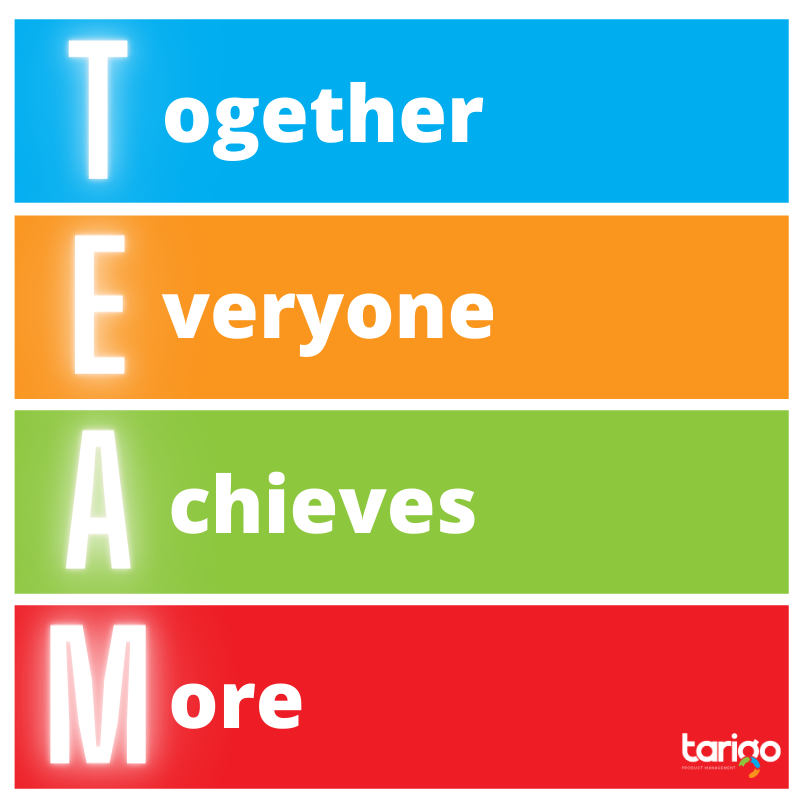
Successfully launching a product
Who is responsible for successfully launching a product?
Ever tried to build a RACI model that describes roles and responsibilities through a product delivery cycle? It often ends up as an overcomplex spreadsheet that feels more academic than real-world as we try and map out the complex world we live in.
What the exercise misses is this; taking a product to market is a team sport - a group of people with expertise across the product delivery process are engaged in bringing a product to market from inception, to launch, to in-life management.
They bring their expertise to the table and might take the lead on certain topics. But they work as a team to get the best product delivered. My tip; whenever you’re trying to deliver a product to market, agree some team objectives and key results, and never lose sight that you’re on the same team!
read more
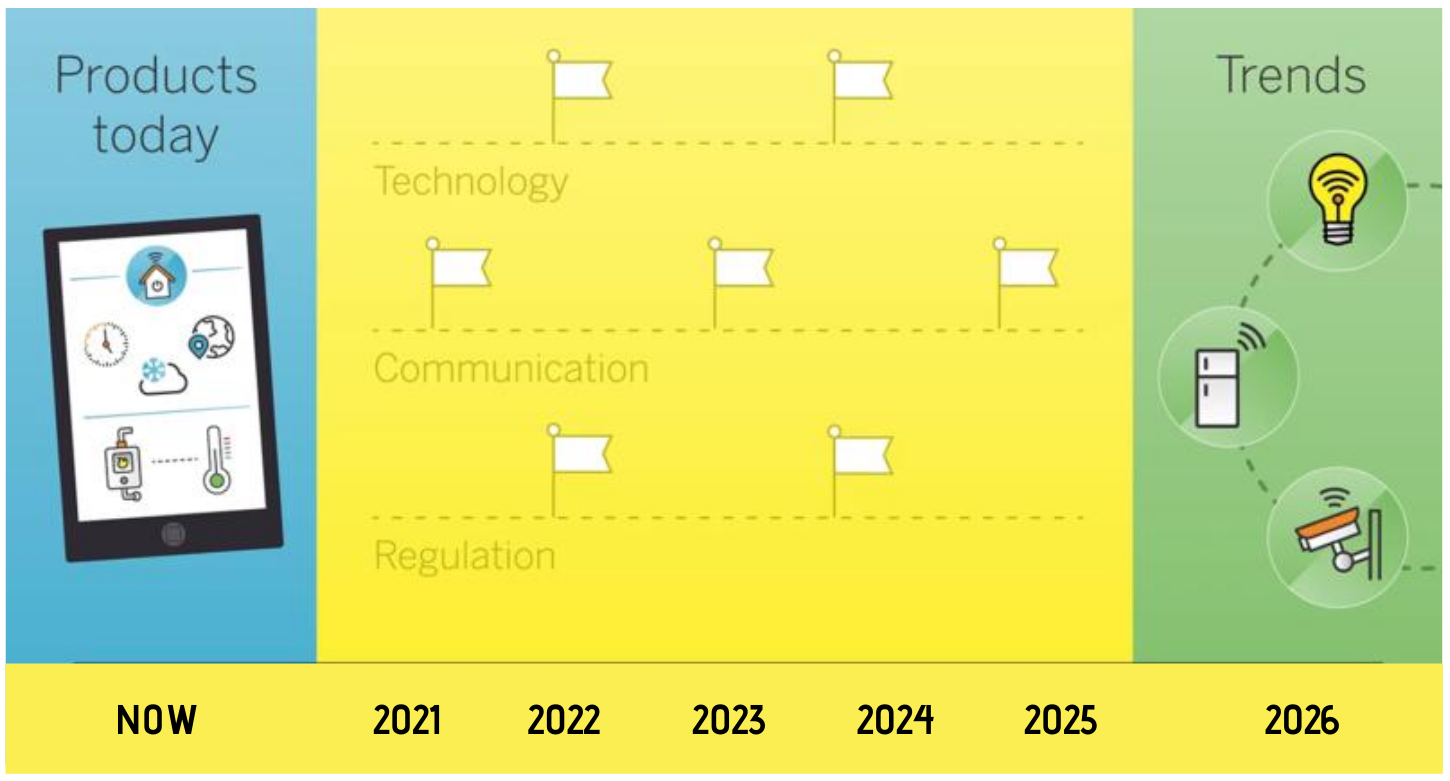
long-term direction of product
When did you last think about the long term direction of your product?
Many of us get so caught up in the day-to-day that we forget to look up. The risk is our product might become irrelevant as trends change market needs. So spend a few minutes thinking:
• What trends are heading towards my market that may impact what we deliver?
• How would our current product suite cope?
• What small technology, communications and regulatory steps should I take to keep my product relevant.
Remember, taking many small steps forward is easier and less risky than one giant leap. But it often gets you to the same place.
read more
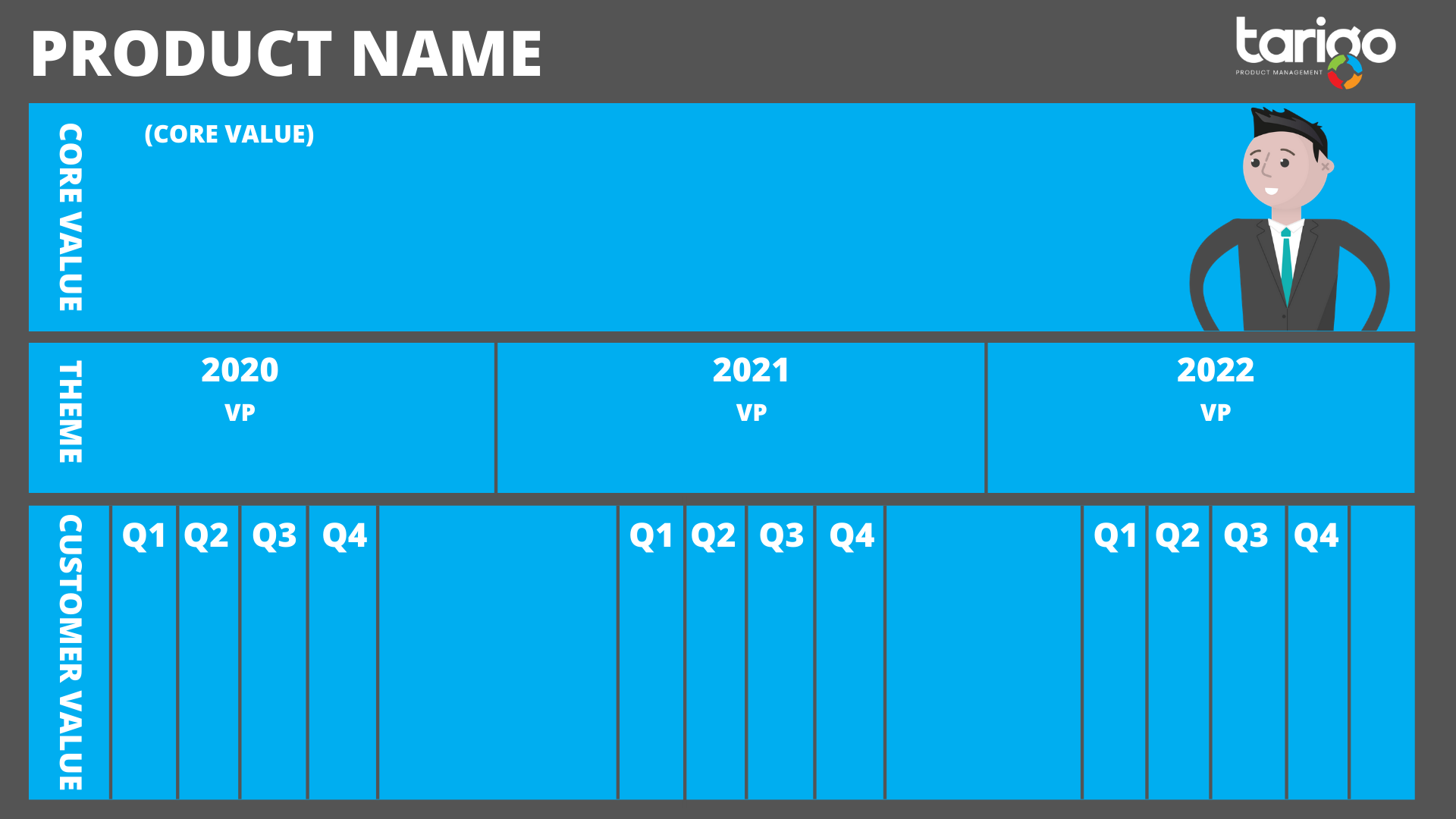
Vision into action
Turning vision into action. Building a vision is great.
But Product managers need to turn that vision into action – work out how to deliver customer value in incremental as we work towards that vision.
We use this vision template to help:
1. Describe the core value you plan to offer (your vision)
2. Work out what the annual goal needs to be that help move towards that vision
3. Describe the incremental customer value you deliver each quarter that move towards your annual goal
read more
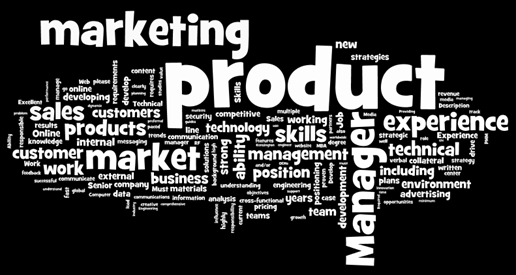
Product Management/Marketing
Product Management and Product Marketing
Clarity of the roles and responsibilities across the two disciplines is vital in any organisation.
For many product managers, the role of product marketing may be undertaken by another group or individual in the organisation. It may be considered part of their own role but is often undertaken with lower levels of knowledge & experience.
In some cases, product marketing may not be practiced at all, and a new or improved product "thrown over the wall" to the rest of the organisation and the market!
It is clear to me that the combination of strategies and processes from both disciplines maximises the success of a new or updated product.
In many ways it is less about the need for an organisation to have both roles (although this is undoubtedly important as a product scales) but more about the need for an organisation to adopt & integrate both disciplines, perhaps using a collaborative team approach.
In simple terms we could state that Product Management has to define and oversee the build of the product and Product Marketing has to take it to market. The reality is more complex than this...
read more

Don’t take customers for granted
So many organisations look at their existing customers as ‘A deal that is already done’.
Why is it that they so rarely ask how are these happy customers going to help them sell to the next group of customers?
When launching a new product, having a group of strong advocates will kick start those sales far quicker than sending out flyers or other marketing materials.
Think about what you need to do with getting the innovators on board and talking about your solution.
Don’t take your customers for granted. They could be your greatest advocate or your biggest critic. And they can either damage or improve your solution growth, depending on how you treat them.
read more
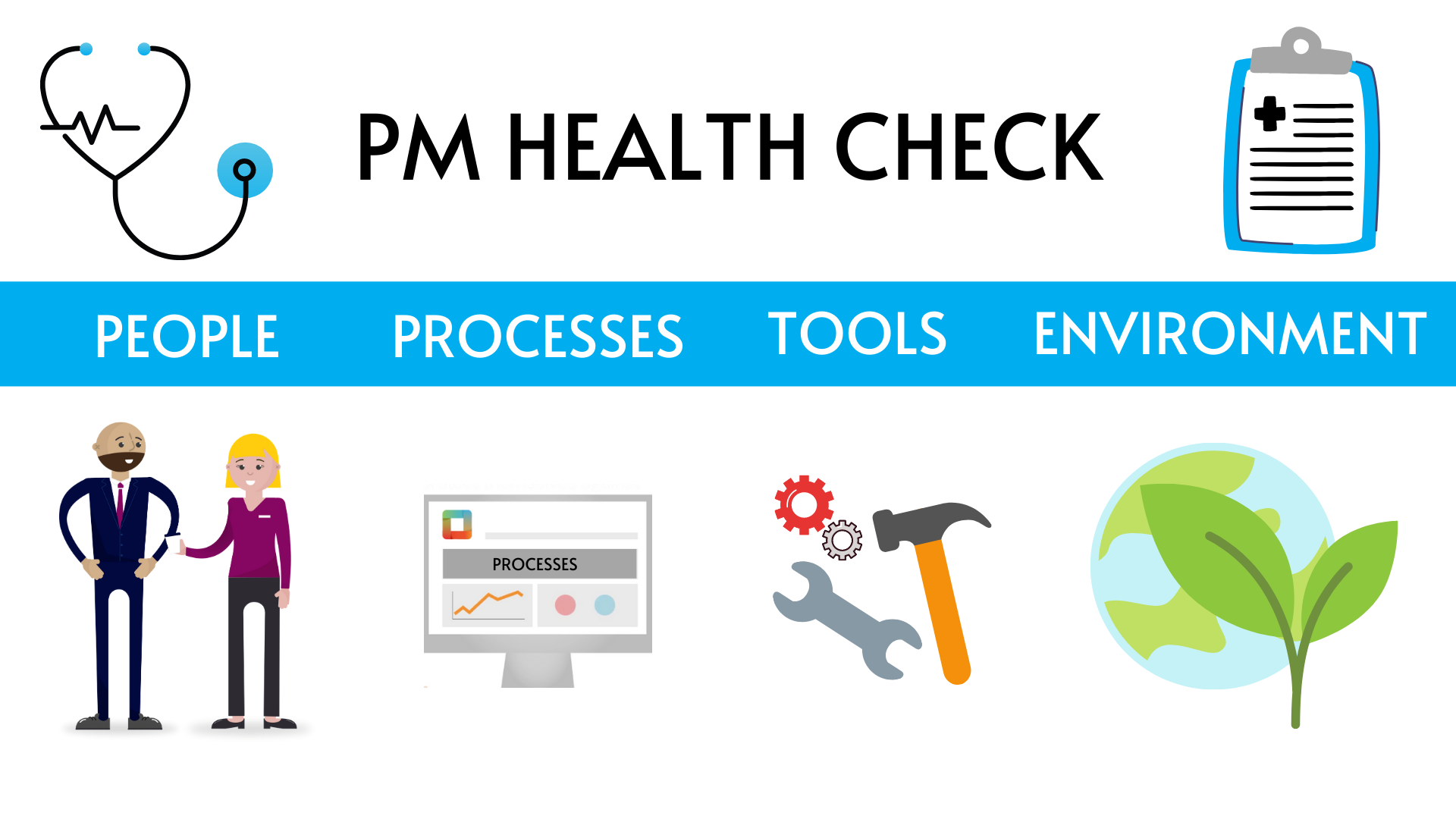
PM Health Check
How do you review the maturity of a PM function? We use a 360 review:
• People
Without the right team in place it’s impossible to excel. We review the team through capability (Do they have the potential to be a great PM?), skills (Do they have the right PM experience?) and scale (Is there enough of them?)
• Processes
We review the full process, reporting, RACI, etc, viewing the process in terms of fit to your business (Risk vs reward vs scale vs speed vs certainty vs evidence vs innovation)
• Tools.
Without standardisation, product managers use such a wide variety of tools that it becomes increasingly difficult for a management team to make reasoned decisions – they cannot do an ‘apples to apples’ comparison. We review the complete process suite for robustness, ease of use, visibility and adherence.
• Environment
A great PM team, with the right processes, tools and templates can still fail to thrive because of the environment - stakeholders, supporting processes and management not aligning with product. We review stakeholder teams leadership engagement and adjacent processes to asses alignment.
read more
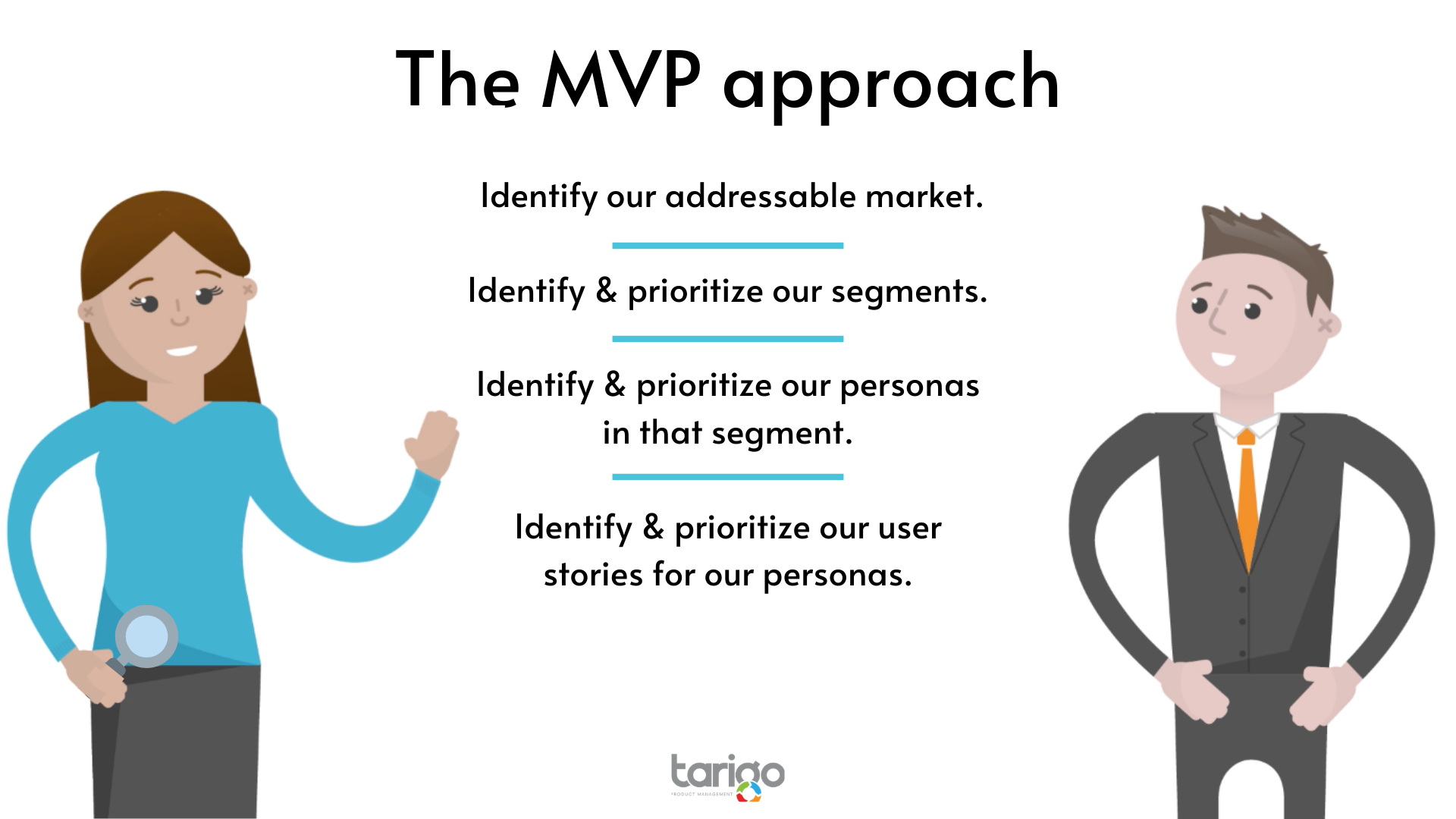
The MVP approach
Why do we use it?
Building the final product takes a long time and is expensive and high risk. Rather than trying to be all things to all segments at the outset, we use the MVP approach to help us prioritize our development roadmap.
The MVP approach helps us to:
• Identify our addressable market.
• Identify and prioritize our segments.
• Identify and prioritize our personas in that segment.
• Identify and prioritize our user stories for our personas.
Careful prioritisation means we can manage the capacity of our development team while still meeting the needs of our customers.
So before development, we prioritize our markets and then we prioritise our personas, then the features and then we develop user stories so that we can develop our product in a controlled and carefully prioritized sequence.
read more

Dealing with discounts
Customers ask for discounts. In the b2b sector it’s pretty unusual for customers not to push the price point down. This is obviously something for sales teams so how does it impact product management?
Firstly, we can help sales teams deal with discount discussions in how we structure the product - a modular approach to pricing means that when a customer asks a £10k solution, we have a £10k product. We can strip out the higher value components and hit the price point with a suitable product offer. But we all know customers often want all the features and the discount. In this case, think of what the sales team can ask for in return for a discount that might benefit your product - reference site visits, a quote to use in some marketing piece, a joint presentation at a conference, access to end users to conduct market research...
The point is this, don’t let discounts be given for ‘free’. It’s much easier to get the quote agreed during a negation than trying to secure it afterwards when the customer wants nothing from you.
read more
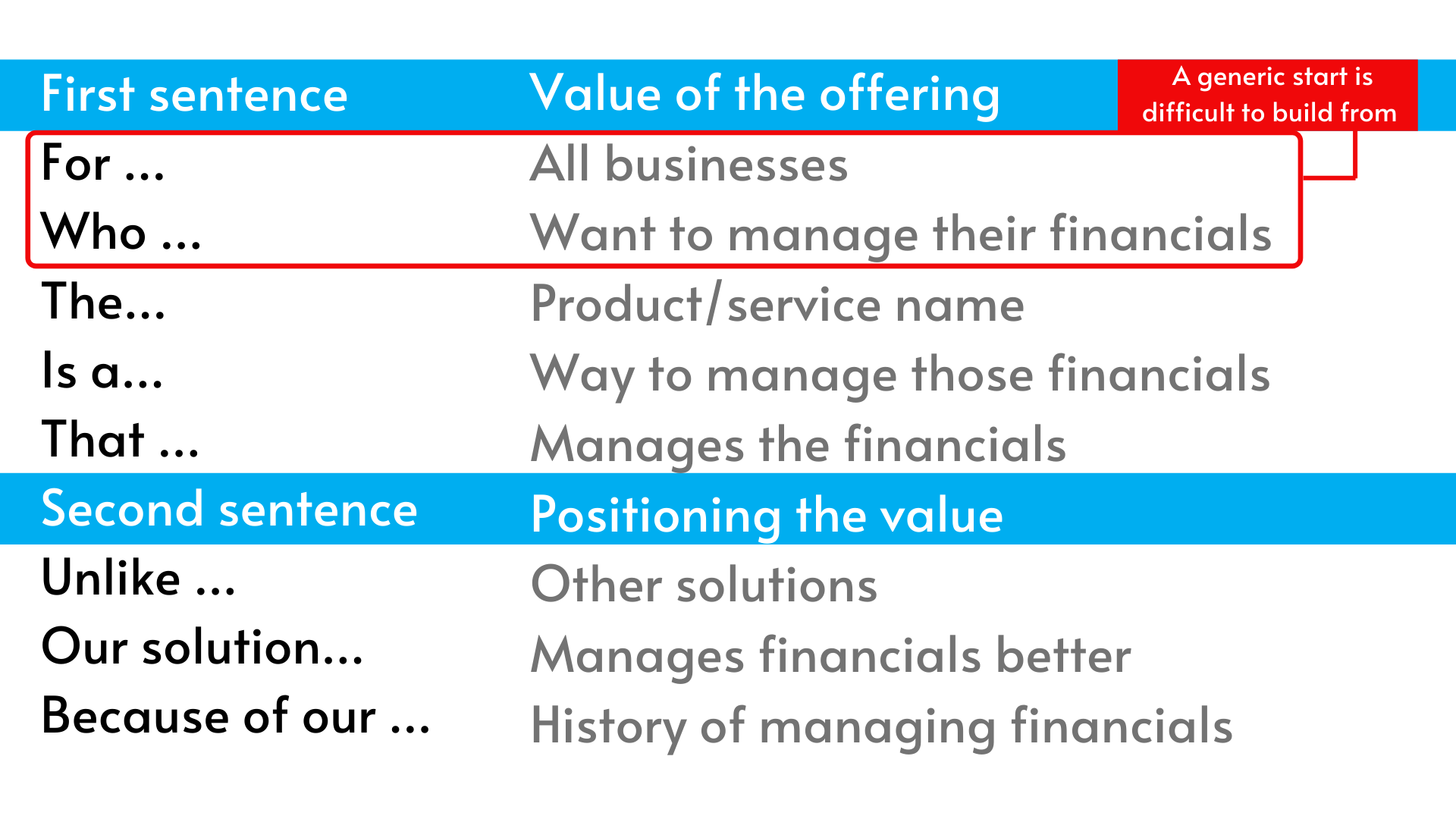
Value Proposition
In working with product teams on the Tarigo 5 D model of Direct, Discover, Define, Deliver and Drive, we often see some challenges in the area of Define, and in our workshops associated with Define we see less precision in the communications associated with the target market. Teams use “marketing speak” rather than hard language that directly resonates. If you have challenges with this, see how you can use language that will resonate with your target market, and remember, a generic start from a value proposition is difficult to build from.
read more
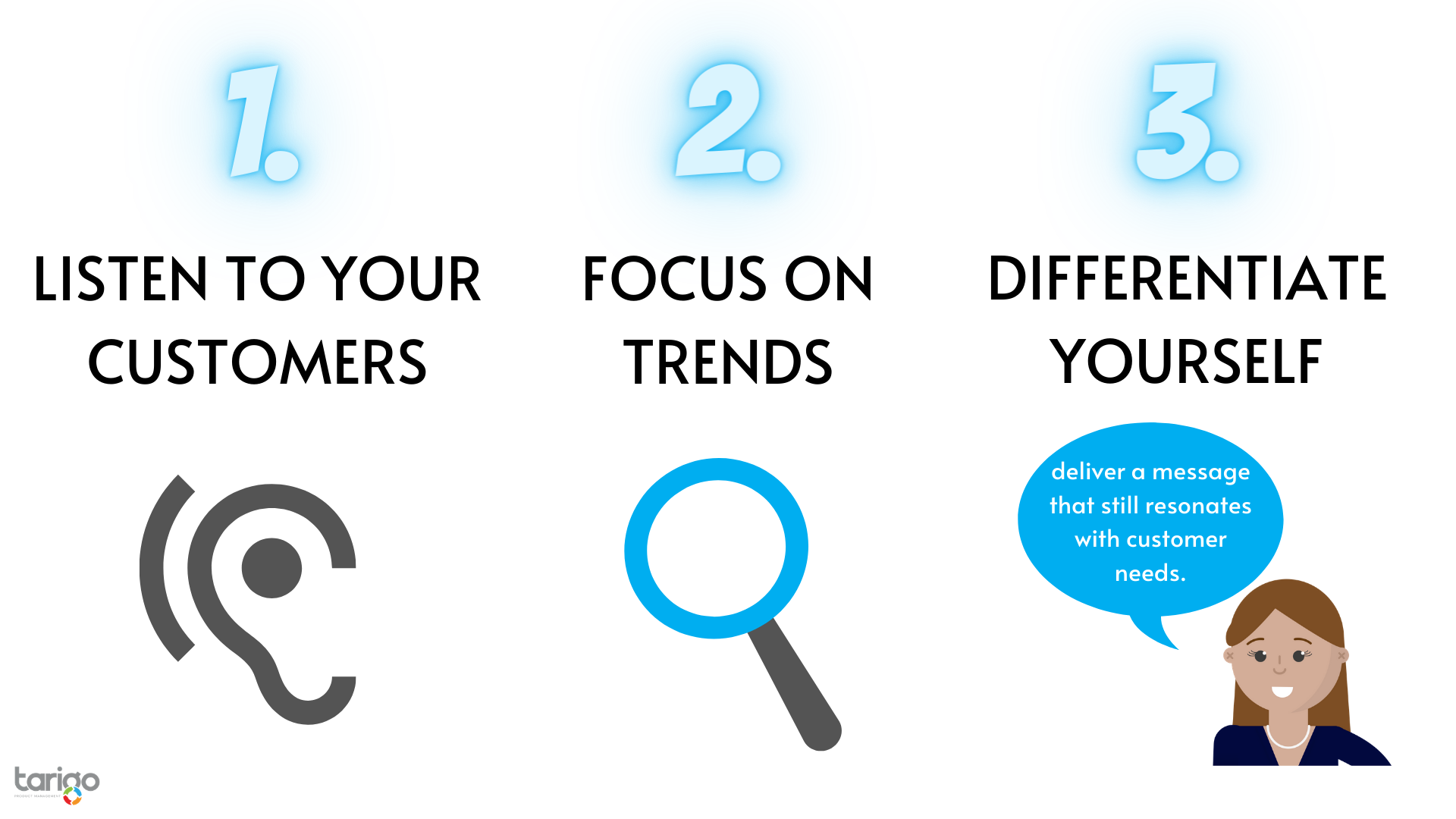
No business can stay still
With Covid here and continuing to disrupt our business and lives, more than ever we need to be focused on what the future is going to look like and how we are going to deal with the change that is inevitably going to happen So, here are 3 tips on how to survive:
1) Listen to your customers
Your customers have also gone through the same amount of change as you have, so empathise and go back out to listen to them. You may find that their needs have changed or, at the very least, their priorities. Pivot your business to meet these changing needs.
2) Focus on trends
The world has changed; there is the ‘new normal’ and you need to adapt. Don’t think things will go back to where they were, they won’t! People have identified key benefits of working in the ‘new normal’. You also need to think about
what trends might be happening in 3-5 years’ time.
3) Differentiate yourself
Think about why your targeted customer segments would want to buy from you. Go back to what is important to your customers and make sure you are delivering a message that still resonates with their needs. Look at your competition and see what they are saying; are they saying the same thing as you?
I hope these three points make sense. Remember, no business can stay still.
read more
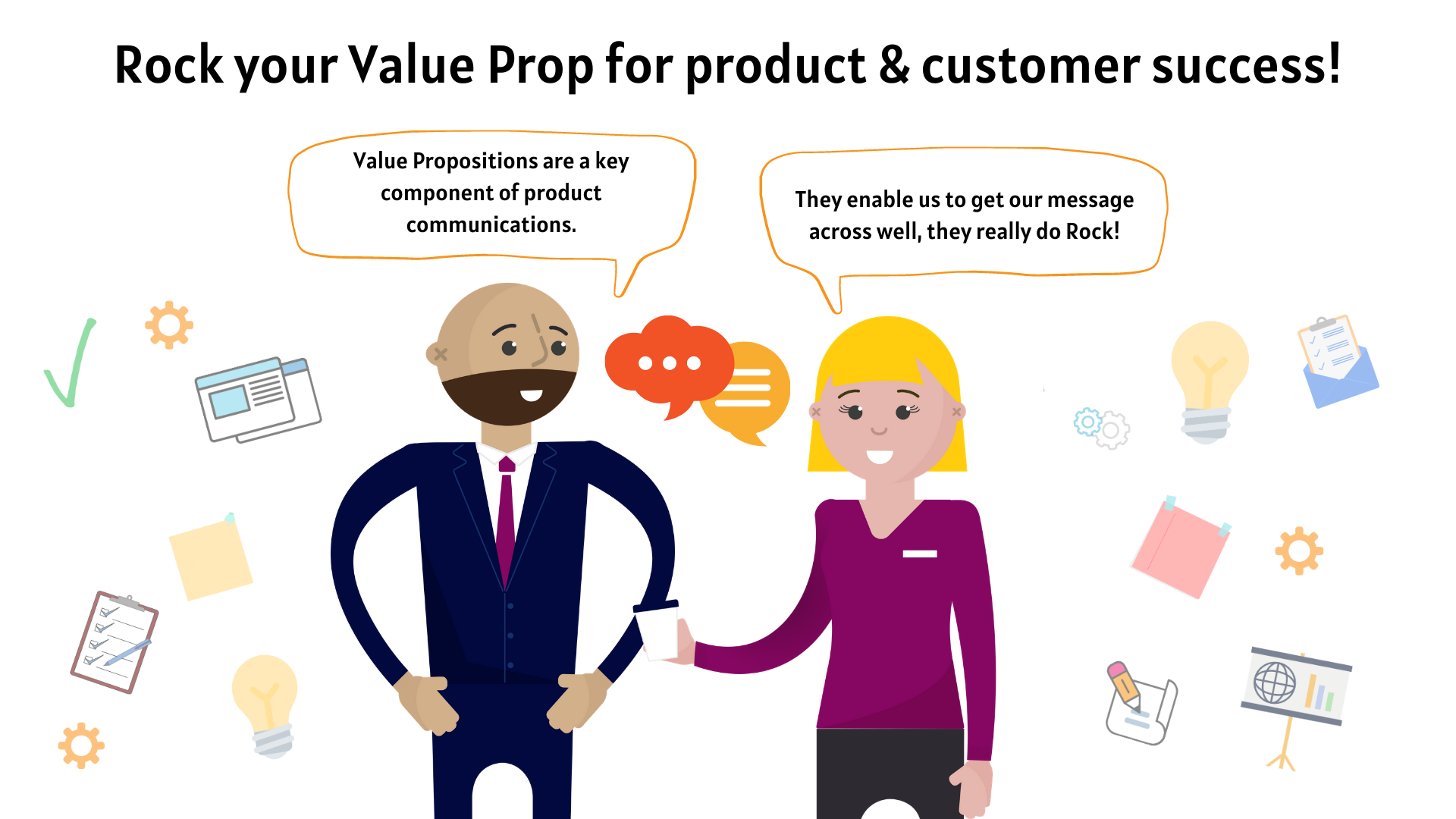
Rock your Value Prop
Rock your Value Prop for product & customer success!
Don’t leave Value Props till the Delivery phase. Value Propositions are in the Define phase of the Product Management Process to ensure we build products from the get-go that create value for the customer.
Product teams must understand the greatest value from the get-go, because it determines the vision for our products and services, shapes the roadmap, the plan, and helps us prioritise. Understanding the customer perception of value at the beginning in the Define phase helps us build products that will be valued by customers when they are delivered. In the Delivery phase we use a Value Proposition to communicate the value and differentiation to our potential customers.
Value Propositions are a key component of product communications, they enable us to get our message across well, they really do Rock!
read more
Check out the Archive